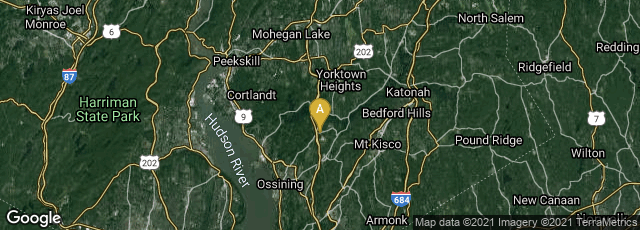

A: Ossining, New York, United States
LOn February 14, 2011 IBM's Watson question answering system supercomputer, developed at IBM's T J Watson Research Center, Yorktown Heights, New York, running DeepQA software, defeated the two best human Jeopardy! players, Ken Jennings and Brad Rutter. Watson's hardware consisted of 90 IBM Power 750 Express servers. Each server utilized a 3.5 GHz POWER7 eight-core processor, with four threads per core. The system operatesd with 16 terabytes of RAM.
The success of the machine underlines very significant advances in deep analytics and the ability of a machine to process unstructured data, and especially to intepret and speak natural language.
"Watson is an effort by I.B.M. researchers to advance a set of techniques used to process human language. It provides striking evidence that computing systems will no longer be limited to responding to simple commands. Machines will increasingly be able to pick apart jargon, nuance and even riddles. In attacking the problem of the ambiguity of human language, computer science is now closing in on what researchers refer to as the “Paris Hilton problem” — the ability, for example, to determine whether a query is being made by someone who is trying to reserve a hotel in France, or simply to pass time surfing the Internet.
"If, as many predict, Watson defeats its human opponents on Wednesday, much will be made of the philosophical consequences of the machine’s achievement. Moreover, the I.B.M. demonstration also foretells profound sociological and economic changes.
"Traditionally, economists have argued that while new forms of automation may displace jobs in the short run, over longer periods of time economic growth and job creation have continued to outpace any job-killing technologies. For example, over the past century and a half the shift from being a largely agrarian society to one in which less than 1 percent of the United States labor force is in agriculture is frequently cited as evidence of the economy’s ability to reinvent itself.
"That, however, was before machines began to 'understand' human language. Rapid progress in natural language processing is beginning to lead to a new wave of automation that promises to transform areas of the economy that have until now been untouched by technological change.
" 'As designers of tools and products and technologies we should think more about these issues,' said Pattie Maes, a computer scientist at the M.I.T. Media Lab. Not only do designers face ethical issues, she argues, but increasingly as skills that were once exclusively human are simulated by machines, their designers are faced with the challenge of rethinking what it means to be human.
"I.B.M.’s executives have said they intend to commercialize Watson to provide a new class of question-answering systems in business, education and medicine. The repercussions of such technology are unknown, but it is possible, for example, to envision systems that replace not only human experts, but hundreds of thousands of well-paying jobs throughout the economy and around the globe. Virtually any job that now involves answering questions and conducting commercial transactions by telephone will soon be at risk. It is only necessary to consider how quickly A.T.M.’s displaced human bank tellers to have an idea of what could happen" (John Markoff,"A Fight to Win the Future: Computers vs. Humans," http://www.nytimes.com/2011/02/15/science/15essay.html?hp, accessed 02-17-2011).
♦ As a result of this technological triumph, IBM took the unusal step of building a colorful website concerning all aspects of Watson, including numerous embedded videos.
♦ A few of many articles on the match published during or immediately after it included:
John Markoff, "Computer Wins on 'Jeopardy!': Trivial, It's Not," http://www.nytimes.com/2011/02/17/science/17jeopardy-watson.html?hpw
Samara Lynn, "Dissecting IBM Watson's Jeopardy! Game," PC Magazine. http://www.pcmag.com/article2/0,2817,2380351,00.asp
John C. Dvorak, "Watson is Creaming the Humans. I Cry Foul," PC Magazine. http://www.pcmag.com/article2/0,2817,2380451,00.asp
Henry Lieberman published a three-part article in MIT Technology Review, "A Worthwhile Contest for Artificial Intelligence" http://www.technologyreview.com/blog/guest/26391/?nlid=4132
♦ An article which discussed the weaknesses of Watson versus a human in Jeopardy! was Greg Lindsay, "How I Beat IBM's Watson at Jeopardy! (3 Times)" http://www.fastcompany.com/1726969/how-i-beat-ibms-watson-at-jeopardy-3-times
♦ An opinion column emphasizing the limitations of Watson compared to the human brain was Stanley Fish, "What Did Watson the Computer Do?" http://opinionator.blogs.nytimes.com/2011/02/21/what-did-watson-the-computer-do/
♦ A critical response to Stanley Fish's column by Sean Dorrance Kelly and Hubert Dreyfus, author of What Computers Can't Do, was published in The New York Times at: http://opinionator.blogs.nytimes.com/2011/02/28/watson-still-cant-think/?nl=opinion&emc=tya1